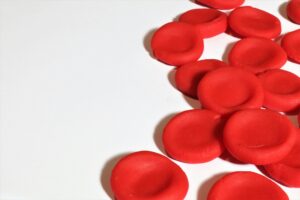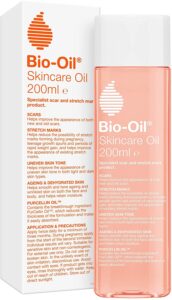The impacts of endometriosis on pregnancy need more discussion. We have put together a summary of how endometriosis affects women trying to get pregnant and those that become pregnant, the more people that talk about this, the more awareness we can raise!
Let’s look at the definition and prevelance:
‘The presence of the endometrium outside of the uterine cavity, accompanied by chronic inflammation’.
According to Endometriosis UK; there are currently around 1.5 million women and those assigned female at birth, living with the condition in the UK today and the prevalence of the disease in women with infertility may be as high as 30–50%. Although the cause and natural history of the disorder remains uncertain, hormonal, neurological, and immunological factors are all implicated in the mechanisms contributing to the development of symptoms.
Studies have found that endometriosis can cause some complications for pregnant and postnatal ladies. This study reported that women who have had surgical treatment for endometriosis and have become pregnant, appear to have a higher risk for placenta previa. This study found that women with endometriosis have an increased risk of preterm birth and this study reported an increased risk of miscarriage in ladies with endometriosis. Clinicians should be alert to these potential risks and manage these patients accordingly.
Symptoms:
In 66% of women with endometriosis, the first symptoms of the disease appear before the age of 20. The impact of these symptoms on pregnancy can be quite worrying, especially for first time mums. These symptoms might include any of the following:
- Gradually increasing acute premenstrual pain.
- Pelvic pain.
- Pain in the sacral region of the spine.
- Dysmenorrhea (severe and frequent menstrual cramps and pain during your period).
- Painful ovulation.
- Pain during intercourse.
- Pain when defecating.
- Pain when urinating.
- Pain when sitting.
- Pain in the pelvis and / or radiating to the back.
- Abundant, irregular menstruation.
- Blood in the stool.
- Diarrhoea or constipation.
- Infertility.
- Chronic fatigue.
Other symptoms that might be experienced but are less common are:
- Raised temperature.
- Nausea.
- Dizziness.
- Headaches.
- Symptoms of depression or anxiety.
- Hypoglycemia (blood sugar [glucose] level is lower than the standard range).
- Rectal bleeding.
- Susceptibility to infections and allergies.

Causes:
(According to the amazing work from Endometriosis UK):
The actual cause of endometriosis is still unknown but the impact of endometriosis on pregnancy and women’s lives as a whole is starting to become more apparent. There are several theories about the cause but it is likely that it is a combination of some of the following factors:
Retrograde menstruation – When you have a period, some of the endometrium (womb lining) flows backwards, out through the fallopian tubes and into the abdomen. This tissue then implants itself on organs in the pelvis and grows.
Genetic predisposition – Some families may be more susceptible to endometriosis but the causes of this are unclear.
Lymphatic or circulatory spread – Endometriosis tissue particles are thought to somehow travel round the body through the lymphatic system or in the bloodstream.
Immune dysfunction – It is thought that in some cases the immune system is not able to fight off endometriosis.
Environmental causes – This theory suggests that certain toxins in our environment, such as dioxin, can affect the body, the immune system and reproductive system and cause endometriosis.
Metaplasia – Metaplasia is the process where one type of cell changes or morphs into a different kind of cell. Metaplasia usually occurs in response to inflammation and enables cells to change to their surrounding circumstances to better adapt to their environment.

Risk factors:
There are a number of factors that have been associated with endometriosis also, these factors might put someone at higher risk of developing the disease but aren’t necessarily the cause;
- Studies show that an early first cycle (before the age of 11) is associated with endometriosis.
- The rate of endometriosis is also increased in women with short cycles, i.e., lasting less than 27 days, but has been found to be unrelated to the number of bleeding days and the volume of menstruation.
- Endometriosis is higher amongst the Caucasian race.
- Daily consumption of alcohol in the amount of at least 10 g per day has also been linked to higher endometriosis rates.
- Endometriosis is more often diagnosed in infertile women who are active smokers and whose body mass index (BMI) is normal or low.
Infertility in endometriosis:
The impact of endometriosis on pregnancy is clear when it comes to the topic of infertility. Unfortunately, infertility is a common symptom associated with the disease. Often infertility remains unexplained due to a delay in diagnosis, causing significant levels of stress.
Endometriosis is thought to influence fertility in several ways;
- Distorted anatomy of the pelvis.
- Adhesions or scarred fallopian tubes.
- Inflammation of the pelvic structures.
- Altered immune system functioning.
- Changes in the hormonal environment of the eggs.
- Impaired implantation of a pregnancy.
- Altered egg quality.

Here is what the evidence says about the management options for endometriosis:
Diet
Diet is a big topic when it comes to endometriosis. We have therefore broken this section down into subsections to make the information clearer:
- Fruit and veg – Studies have shown that the consumption of green vegetables and fresh fruits is considered to be the most beneficial in preventing the development of endometriosis, whereas an increase in risk is often associated with high intake of beef and other red meat. It is thought that the fibre contained in vegetables, interacts in the control of the intestinal bacterial flora and affects hormonal balance.

- Vitamins, minerals and nutrients – Here is a really recent and detailed study. The authors looked into the effects of different vitamins, minerals and nutrients and how they impact Endometriosis. Following their systematic review of the literature, they concluded that, although evidence is scare when it comes to diet for endometriosis, nutrients with direct or indirect anti-inflammatory properties might be effective against endometriosis-related pain symptoms (but not on recurrence of endometriomas). Fatty acids, antioxidant diindolylmethane (found in vegetables like cauliflower and broccoli), soy-free diets and a combination of additional vitamins such as B6, A, C and E, might help to reduce the symptoms associated with endometriosis. If you would like to read more about the effects of anti-oxidants on endometriosis, check out this link). Always speak to a dietitian before changing your diet or adding supplements to your diet, to check if they are right for you and your symptoms. Here is a good example of antioxidants that you can buy online (UK based).
- FODMAP – This study looked at the effects of a low FODMAP diet on bowel complaints in ladies with endometriosis and concluded that it was effective on their gut symptoms.
- Gluten-Free – This is a significant change to most peoples diet but studies have shown that going gluten free can help with symptoms associated with endometriosis quite significantly. Have a read of this blog also which talks about going gluten free before becoming pregnant.
- Turmeric – This study looked into the use of turmeric in endometriosis in detail, with some really promising results. Also have a read of our blog, which mentions turmeric as one of the supplements taken before becoming pregnant.
Physiotherapy
Endometriosis is known for its inflammatory affects in or around the pelvis region. This inflammation can cause damage to tissues and consequently, result in the formation of scar tissue and unwanted adhesions. It is also theorised that endometriosis can trigger an increase in nerve sensitivity in the pelvic region, pelvic muscle spasms (or tightness) and reduced flexibility in the pelvic region. Physiotherapy aims to rehabilitate and retrain the full range of functional capacity of the pelvic floor muscles, including contraction, holding, relaxing and stretching.
Physiotherapy techniques have been shown to reduce pain and improve quality of life in endometriosis. This study looked at the efficacy of exercise on pelvic pain and posture associated with endometriosis and found that eight weeks of a prescribed Physiotherapy exercise program was effective in decreasing pain and postural abnormalities associated with endometriosis. This study looked at trigger point techniques as a treatment for endometriosis symptoms and found that it helped to reduce the amount of medication taken by their patients.
If you are considering Physiotherapy as a treatment option for your endometriosis or if looking at the impact of endometriosis on your pregnancy symptoms, then be sure to find a qualified pelvic health (or women’s health) specialist Physiotherapist.

Exercise
Physical exercise has been shown to have a beneficial effect on muscle relaxation in patients suffering from endometriosis, which is associated with a reduction in pain levels. According to this study, regular exercise has a protective effect against inflammatory diseases, by inducing higher systemic levels of cytokines (with anti-inflammatory properties). It is also thought that aerobic exercise such as walking and swimming helps to promote reduced menstrual flow, ovarian stimulation, and oestrogen effects and can positively affect serotonin levels, strengthening the muscles of the whole body and improving overall circulation. This is true when looking at the impact of endometriosis on pregnancy and after giving birth also.

Yoga
Another exercise that has been recommended in endometriosis is Yoga. There have been studies that have looked into the effects of Yoga on endometriosis symptoms and the results have been very promising. This study found that women participating in a weekly yoga program reported a decrease in pelvic pain using the relaxation and breathing techniques and an increased level of body awareness. They also found that the program offered social support by connecting them with other women with the disease.
There are lots of Online Yoga programmes available, have a look at our Top 5 here (and why we love them)!

Pilates
Pilates has been shown to help with inflammatory conditions and recovery following pregnancy (especially with pelvic issues). Have a look at our top 5 online Pilates options here.
Surgery
Surgery can have a big impact when it comes to endometriosis and pregnancy.
Research results for the effects of surgery on fertility / pregnancy rates are good. This large review of the available literature found that excisional surgery improved spontaneous pregnancy rates in the nine to twelve months after surgery compared to ablative surgery. They also reported that laparoscopic surgery improved live birth and pregnancy rates compared to diagnostic laparoscopy alone. You can read more about the endometriosis journey of one of our authors, who underwent surgery, here.

Anti-inflammatory drugs
This review (and a few others) have found limited evidence on the effectiveness of NSAIDs (specifically naproxen) for management of pain caused by endometriosis. The quality of the studies available is quite low however, so more research into these drugs is needed.

Probiotics
Although this study is a little old (2011), they produced some interesting results. They looked at the probiotic called Lactobacillus gasseri OLL2809 and its effects on menstrual pain and dysmenorrhea in endometriosis patients. It was found that taking that probiotic in tablet form was effective in treating these symptoms and produced no adverse effects. This systematic review, which was published in 2022, found that taking a combination of a multivitamin/mineral, a Lactobacillus/Bifidobacterium probiotic and fish oil, for six months was more effective than placebo for endometriosis symptoms.
Read more about which probiotics are best to take for endometriosis here.

TCM
Traditional Chinese Medicine has shown some positive results when used in the treatment of infertility in endometriosis patients. Have a look at this study for more details on it’s use. It is worth noting that the sample sizes were a little small so left room for bias.
TENS
This randomised, controlled trial looked at the effects of TENS on pelvic pain in women with deep endometriosis and found that it was effective as a complementary treatment of pelvic pain and deep dyspareunia, improving quality of life in women with deep endometriosis regardless of the device used for treatment. There are many different TENS machines available to buy, so here are our Top 5 picks to make things a little easier.
Acupuncture
There are a number of studies, like this one, which have shown effectiveness in acupuncture, when treating the pain associated with endometriosis. If you would like to consider acupuncture as a treatment option, be sure to book in with a registered practitioner or pelvic health specialist.

Heat
Evidence suggests that heat can be beneficial when it comes to pelvic or period-type pains. Heat helps to increase blood flow to the desired area, resulting in more relaxed muscles and a reduction in static fluids. You can use a hot-water bottle as a good heat source or get yourself a wheat-bag that you heat in the microwave (the heat from these usually last about 15 minutes). There is also the option of the heat patches like these which last about 12hrs and are self adhesive, or the heat with TENS, as shown above.
CBD
Always a controversial subject in the medical world, but it is certainly worth a read of some of the recent studies coming out surrounding the use of CBD in gynaecologic pain conditions. Cannabidiol (CBD) is one of the active compounds derived from the cannabis plant, but unlike tetrahydrocannabinol (THC), CBD doesn’t have the intoxicating effects, it is legal and available to buy online. This study reported significant pain relief in ladies with endometriosis, who took some form of medical cannabis multiple times a week. There have been lots of studies (like this one), that have looked into the effects of CBD on chronic pain in general, with the majority having very promising results. Here is another study, from 2017, that supports the use of CBD in endometriosis.
When talking about the impact of endometriosis on your pregnancy and CBD, there just isn’t the research to ensure it’s safety, so it’s not something we would recommend.
It is hard to know where to start with CBD oils or products because there are so many on the market. We did a little research and found that Blessed CBD was a popular and trusted brand in the UK and has been voted the best CBD oil in the UK by dozens of leading publications. It is worth noting that due to varying cannabis regulations, formulations, delivery methods, and dosages involved in studies, results will naturally vary widely. Research doesn’t include pregnancy or breastfeeding ladies so CBD is not currently suitable for either.
Massage
Studies have shown that regular massage can provide short-term and long-term relief from pelvic pain and muscle spasms associated with endometriosis. This study found a statistically significant difference between the intensity of pain prior to the massage being given, immediately after, and also six weeks after it. This study from 2004 (a little dated now), found that massage therapy reduced pain and improved fertility for up to a year. Both groups received between 10 and 20 hours of massage therapy that concentrated on the soft tissues of the pelvis, hips, and lower back. You can buy a simple massage oil here, this oil is really popular and is used for scar tissue / stretch marks also (possibly a good future investment). Massage is something that can be carried out throughout pregnancy and the impact of endometriosis on your pregnancy can therefore be reduced.
Cushions
Sitting on a donut or ring cushion can provide temporary pain relief if you experience pain on sitting. Have a look at our Top 5 recommended pressure relief cushions here.

Hormones
The impact of endometriosis on your pregnancy when it comes to hormones is a little more complicated.
This is a hot topic with a lot of research behind it. The aim of hormone treatment is to limit or stop the production of oestrogen in your body, as oestrogen encourages endometriosis tissue to grow and shed.
Unfortunately hormone treatment has no effect on the aforementioned adhesions or scar tissue and cannot improve fertility rates. Currently the main options of hormone treatments for endometriosis are; the combined oral contraceptive pill and progestogens, including the intrauterine system (IUS), the contraceptive injection, the implant and progestogen pills. You can read more about these as treatment options via the NHS here. A recent research paper (from 2021) compared guidelines from 6 different countries and two international societies and gave a really detailed overview on the guidelines for treating endometriosis. It is a really interesting read, including some new up and coming research areas, which talks about the medication options in more detail.

Conclusion:
The impact of endometriosis on pregnancy and recovery is huge but there has been some progress with treatments and awareness. There is still such a long way to go but hopefully some of the research here can give you a little more guidance.







